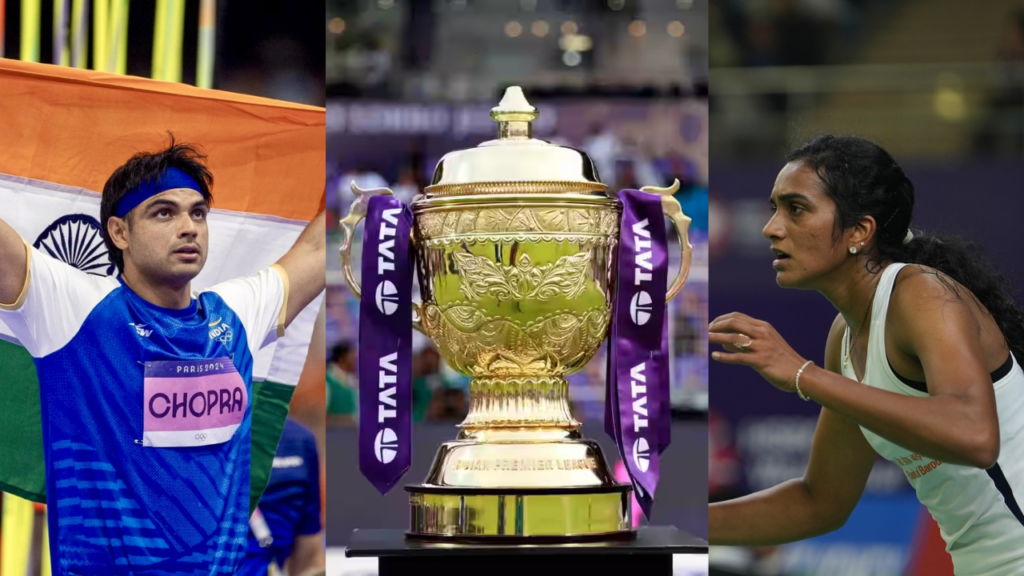
By Mahit Anand, Partner at GameChanger Law Advisors
India, a nation with 1.4 billion people and over 600 million under the age of 25, remains a paradox in global sport. While it celebrates success stories like Neeraj Chopra’s Olympic gold and PV Sindhu’s consistent podium finishes, the wider sporting landscape is marked by neglect, inequity, and chronic underfunding. Franchise leagues like the IPL, ISL, and Pro Kabaddi may attract billions in media rights and sponsorships, yet grassroots development continues to struggle due to overreliance on government funds, inconsistent policy implementation, and lack of private-sector engagement. If India truly aspires for Olympic glory and a fitter, more inclusive future, the nation must re-engineer its approach to sports financing, adopting innovative models that draw from social finance, CSR, and developmental frameworks.
The Numbers Don’t Lie: A Glaring Funding Gap
India’s per capita sports budget in FY 2023-24 was approximately $0.30, according to Deloitte’s “Think Sports” report. This pales in comparison to countries like Australia ($11) and the United Kingdom ($9). India’s total sports budget stood at ₹3,397.32 crore (≈ $410 million), with the Khelo India Scheme receiving ₹1,000 crore in 2025-26. In contrast, the UK allocated over £390 million (≈ $480 million) just for athlete preparation for the 2020 Tokyo Olympics.
The National Infrastructure Pipeline lists over $2.39 billion worth of pending sports projects. Yet, CSR funding towards sports remains marginal. In FY 2022-23, Indian corporates spent ₹526.14 crore on sports—just 1.5% of the total CSR expenditure, which was over ₹33,000 crore. Historical data from the National CSR Portal shows that while CSR funding for sports has grown from ₹57.6 crore in 2014-15, the CSR corpus towards sports remain modest relative to other sectors like education (29.07% of CSR) and healthcare (21.83% of CSR).
Reliance on Government Funding
Government-led programs have provided a much-needed foundation for Indian sport. Schemes like Khelo India, the National Sports Development Fund (NSDF), and the Target Olympic Podium Scheme (TOPS) have played a role in identifying and supporting talent. For example:
- Khelo India has created over 1,000 Khelo India Centres nationwide and launched the Youth, University, and Winter Games to scout talent.
- The Sports Authority of India (SAI) received ₹830 crore in 2025, supporting elite athlete training under TOPS.
- NSDF has raised over ₹485 crore through government and private donations.
Yet, government schemes remain top-down and urban-centric. Funding is concentrated in a few high-visibility sports, creating disparity in support for others. Despite policy initiatives, structural inefficiencies and lack of state-level coordination persist, leaving many promising athletes in rural and semi-urban areas unsupported.

Also Read: Neeraj creates history in Doha – A microcosm of RevSportz’s vision to cover every sporting event
The Missing Link: Grassroots Investment
India’s sports ecosystem suffers from a structural imbalance: while the elite tier receives considerable attention, the base of the pyramid—school and community-level sport—is fragile. A 2022 report by KPMG estimates that less than 10% of Indian schools have access to structured physical education programs. Despite the Fit India Movement and initiatives like CBSE’s inclusion of physical education, most government schools lack functional playgrounds, PE teachers, or basic equipment.
Urban areas enjoy better infrastructure, but over 70% of India’s sporting talent comes from rural and tier-2/3 cities. Paradoxically, these areas lack fundamental facilities. A lack of qualified coaches, poor maintenance of facilities, and minimal access to equipment further compound the problem.
Global comparisons offer perspective. The UK’s “Sporting Future” strategy, supported by National Lottery funds, invests in community clubs, youth leagues, and coaching certification. Australia’s “Sport 2030” policy emphasises a life-course approach to physical activity, backed by well-funded state sports organisations.
Why Sports Needs Funding: The Developmental Imperative
Beyond competition, sport is a catalyst for holistic development. According to UNESCO’s recent report, every $1 invested in sport can return between $3 and $124 in broader socio-economic benefits. This includes improved physical and mental health, higher educational attainment, gender equality, and reduced youth delinquency.
Programs by Tata Steel, Reliance Foundation, and JSW Group have demonstrated how sport can be a tool for social development. From promoting tribal sports and reducing school dropouts to creating high-performance centres, these initiatives embody the Sports for Development (S4D) ethos. Yet, such models remain the exception rather than the rule.
Also, the draft National Sports Policy, 2024 (“NSP”) recently released by the Ministry of Youth Affairs and Sports sets out a robust roadmap that is aimed at developing a sporting culture that is accessible, inclusive and excellence-driven. It places an emphasis on S4D, aiming to leverage sport as a means to achieving broader social goals such as community cohesion, empowerment and inclusive growth while also improving public health and enhancing the quality of life. However, it lacks financial instruments to sustain these ambitions at scale.
Also Read: Is Ajinkya Rahane the experienced hand India need in England?
A New Financing Playbook: Unlocking Social Capital
To bridge the existing gaps, India must diversify its sports funding model by embracing social finance:
- Blended Finance & Outcome-Based Contracts (OBCs): Use mechanisms like Social Impact Bonds (SIBs) and Development Impact Bonds (DIBs) to align philanthropic, public, and private investments with measurable outcomes. The Skill Impact Bond (NSDC, Dell Foundation) is a precedent, achieving 74% female participation across 18 states.
- CSR 2.0: Redesign CSR from donation-centric to strategy-driven. Encourage long-term partnerships with federations, state bodies, and academies. Programs like “One Corporate, One Sport” can ensure every discipline receives targeted support.
- Social Stock Exchange (SSE): Utilize India’s SSE to allow non-profits and social enterprises in sports to raise funds from impact investors. This can enable transparency, accountability, and scale.
- Tax Incentives: Introduce tax benefits for individuals and institutions funding grassroots and community sports. Offer tax deductions for infrastructure, coaching, and athlete sponsorships.
For all Sports Updates, Follow RevSportz
Conclusion: The Time is Now
India’s sporting journey stands at a critical juncture. The intent exists, as do the frameworks, but what is needed is the will to implement a multidimensional funding model that reaches every athlete, regardless of geography or discipline. Social finance, when paired with policy reform and corporate engagement, offers a compelling roadmap.
If India dreams of Olympic glory and a fitter, more inclusive future, the transformation must begin at the grassroots. It must be data-driven, outcome-based, and people-first. Because the future of Indian sport lies not in stadiums alone, but in the systems that make every child believe that their dreams are worth funding.